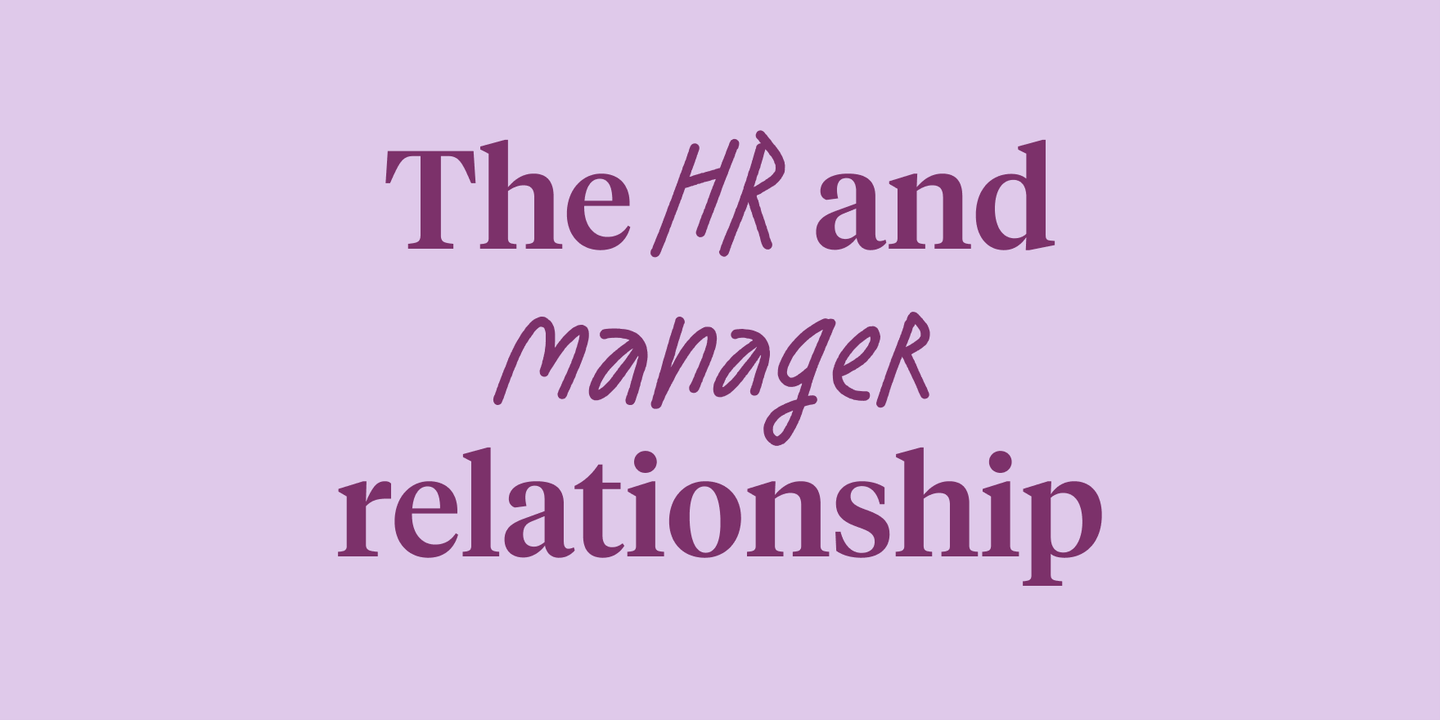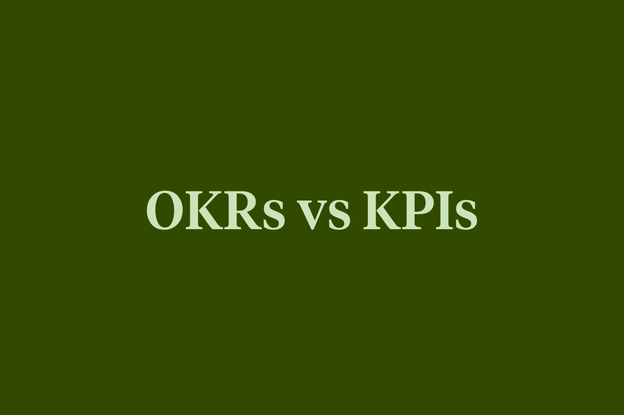How to strengthen HR and manager relationships

Historically, the HR and manager relationship has experienced a lot of tension. Managers tend to view HR as “paper pushers,” while HR teams don’t feel like managers are fulfilling their roles as culture champions. But the relationship between HR and managers is important when it comes to the success of an organization, and both sides need each other to accomplish their respective goals.
That’s why we want to create a world of work where the HR and manager relationship is motivated by partnership rather than compliance. In this article, we explain how to intentionally cultivate deeper, more collaborative relationships between HR and managers.
What the HR and manager relationship should look like
Generally, the HR and manager relationship tends to fall into one of two categories, one negative and one positive:
Blocker
This type of relationship happens when both sides view each other as obstacles. Managers view HR as the “compliance police” instead of a strategic partner. Similarly, HR views managers as barriers to successfully implementing their initiatives instead of being advocates. In a blocker relationship, both sides also become too focused on their own goals and develop tunnel vision instead of identifying areas of shared interests.
Example of a blocker relationship:
Let’s say your team wants to introduce a virtual wellness week to address the increased anxiety of employees during COVID-19. While HR is excited about this initiative, managers are not because they know from conversations with direct reports that employees are feeling fatigued by virtual events.
Instead of communicating this misalignment with HR, managers resist the initiative and don’t help promote it – which is frustrating for your team since they’ve already invested time and energy into making it happen. As a result, the virtual wellness week sees poor attendance and continues the cycle of tension between HR and managers.
Amplifier
This type of relationship happens when managers and HR have a shared intent. While their goals may look slightly different, both managers and HR teams find a connection and do their best to partner, try to amplify each other’s work, and bring compassion to the working relationship.
Example of an amplifier relationship:
We’ll use the same example as above – the HR team is introducing a new employee wellness initiative. This time, they brought managers into the process early and discussed what employees need most during these stressful times. Together, they agreed on giving the whole organization a collective mental health day.
The HR team and managers strategized the announcement and everyone benefited from having a day off to recharge. Afterward, they even distributed a short survey to see if this initiative was helpful and found it was a huge success, which strengthened the feelings of camaraderie between both sides.
Undoubtedly, the amplifier relationship is the most beneficial to everyone at an organization. While it’s not easy to make the transition from a blocker relationship to an amplifier relationship, we’ll share a few recommendations in the next section to make the process more digestible.
Recommendations to strengthen the HR and manager relationship
Below, we share four tips on how HR can help support managers by fostering a relationship of mutual benefit.
1. Identify shared goals
Before embarking on any project or initiative together, HR teams and managers need to identify their shared goals. To be clear: their goals don’t have to be exactly the same or 100% aligned – that’s simply not realistic. But they should, at the very least, have a shared intent. For instance, the shared intent can be improving the wellbeing of employees or increasing the diversity of the talent pool. Without taking the time to identify these commonalities, it may feel like HR is getting in the way of managers’ goals or vice versa.
Tips:
- Deploy an employee feedback strategy. An employee feedback strategy is a powerful way to collect feedback at scale. You can use this data to identify where your employees and teams are succeeding or struggling. This will help HR better support managers where they actually need help and identify areas where there are shared interests.
- Encourage open dialogue. A study found that 75% of managers believe HR keeps information and data “close to its chest.” This indicates a need for managers and HR to have more transparent conversations. Not only will this build trust, but it’ll also encourage knowledge sharing – which can be beneficial to both sides, who each bring unique perspectives to the table.
2. Minimize areas of conflict
Even after discussing shared goals, there will likely still be areas of conflict. For example, managers and HR may decide to approach their goals in different ways or have varying levels of priorities. This is perfectly normal, but it’s important to acknowledge that these conflicts exist and find ways to minimize them as much as possible.
Tips:
- Clearly identify responsibilities. When HR teams and managers collaborate on a project, it’s important to clarify who is responsible for what. This will create greater accountability on both sides and reduce the chances of people stepping on each other’s feet. For example, managers and HR should decide how to divide responsibilities for the employee onboarding process. Perhaps HR sets the overall strategy while managers implement the process and use feedback to iterate on the program. While there’s no “right” way to approach this, it’s essential to have the conversation first.
- Set realistic expectations. By being straightforward about what’s on each other’s plates and setting clear expectations, you can minimize a lot of misunderstandings. For instance, 48% of managers feel that HR is too slow to respond to requests. In cases like this, HR should explain that they have a lot on their plates, and managers should understand that they may not be as timely in responding to certain requests. In return, managers should be empowered to make certain decisions without HR blocking their progress.
3. Create alignment
To create alignment, it may be helpful for HR to approach managers as both a customer and a partner. Both the business and managers have needs, and HR has to navigate the alignment between those areas. Similarly, managers need to be communicative with HR about what their needs are and how HR can be supportive of them, as well as how they can better amplify HR’s goals.
Tips:
- Provide the right tools. You can use the results of your employee feedback strategy to provide tools that align with the needs of managers. For example, if managers are struggling with their 1-on-1 conversations, you can give them access to a platform like Culture Amp to help managers have more impactful 1-on-1 meetings with their direct reports.
- Agree on shared systems. HR needs to define which systems are required and why. But they also need to give managers the autonomy to approach things in their own way, where it makes sense. Let’s use the example we mentioned above. HR may want all managers to use Culture Amp for the sake of consistency and accountability, but it can be up to the manager’s (and direct report’s) discretion exactly how they want to utilize the tools that are offered in the platform.
4. Close the loop
Without constant communication, it can be easy to assume that other people aren’t making progress. So it’s common for HR to take feedback from managers and make changes without them being aware. Similarly, managers may be taking action on their shared goals, but HR has no way of knowing. All of this has the potential to erode trust. That’s why there needs to be a mechanism in place to make sure HR teams and managers are closing the loop when it comes to shared initiatives.
Tips:
- Have regular check-ins. To demonstrate that projects are progressing and minimize potential frustrations on both sides, HR teams and managers should have regular check-ins. This can take the form of monthly conversations or even quick updates in a shared Slack channel to ensure that everyone is aware of what other people on the team are doing.
- Use surveys. Similarly, surveys are a great way to close the loop on any project. Collecting feedback from employees offers the perfect opportunity for HR leaders and managers to get together, discuss the results, and collectively decide on what to change or improve for the next project.
With the right approach, the HR and manager relationship can be incredibly valuable to an organization and its people. Use these recommendations to redefine your relationship with managers from being blockers to amplifiers.






